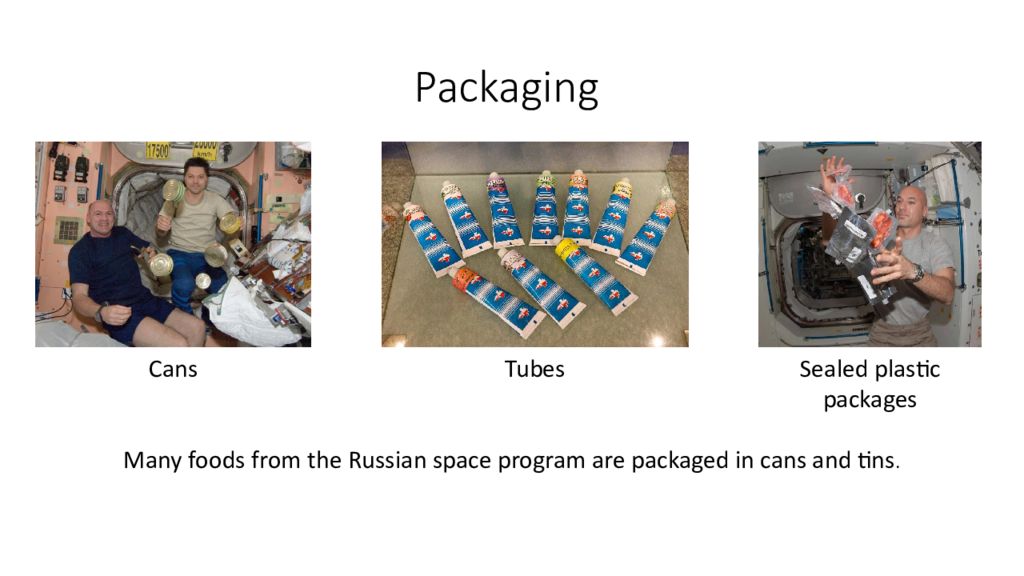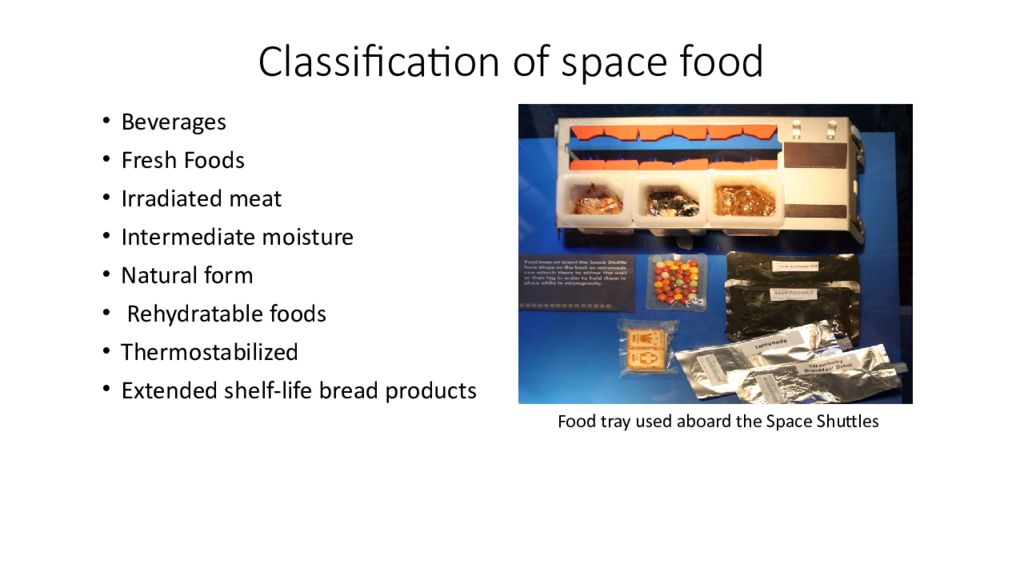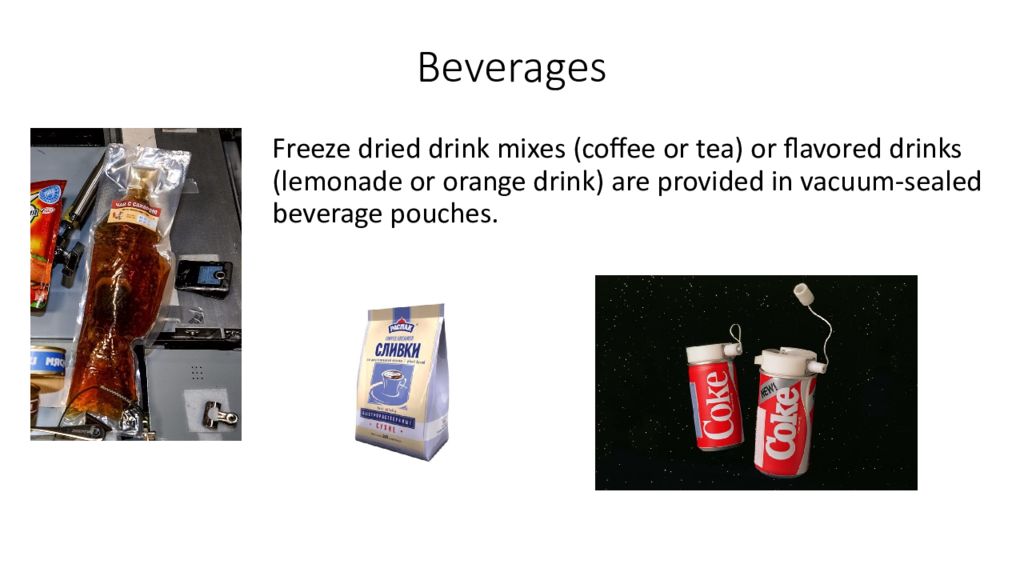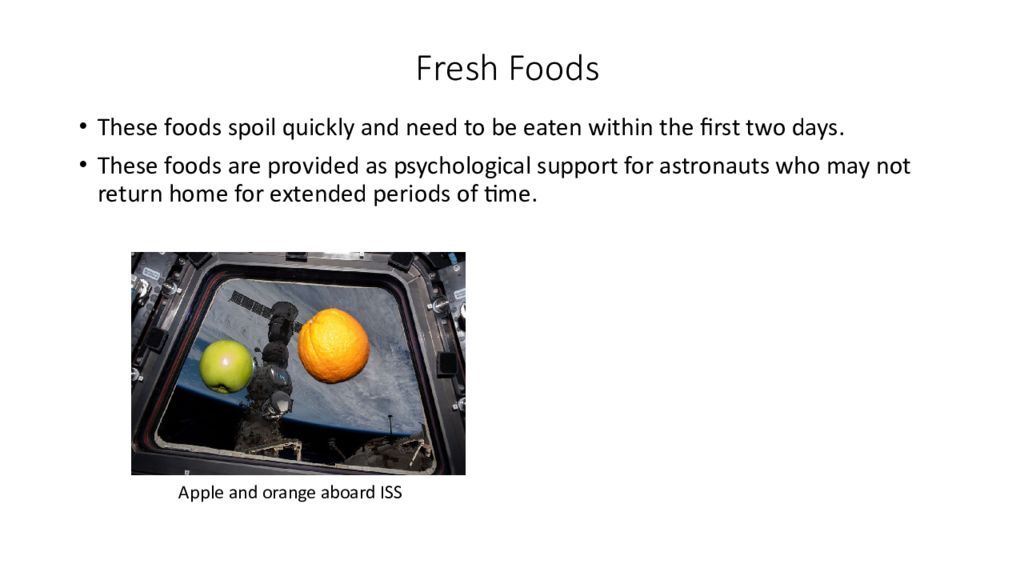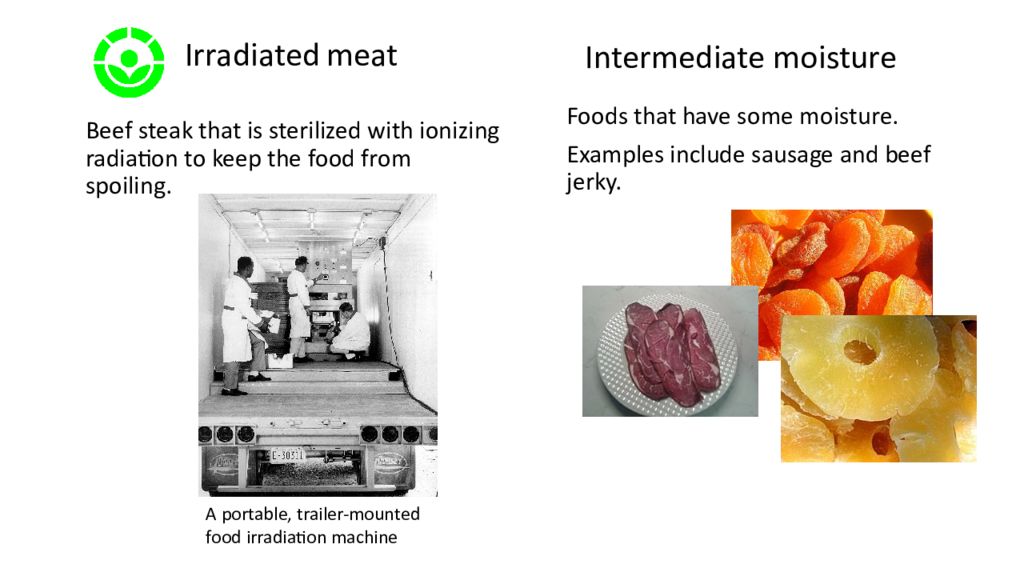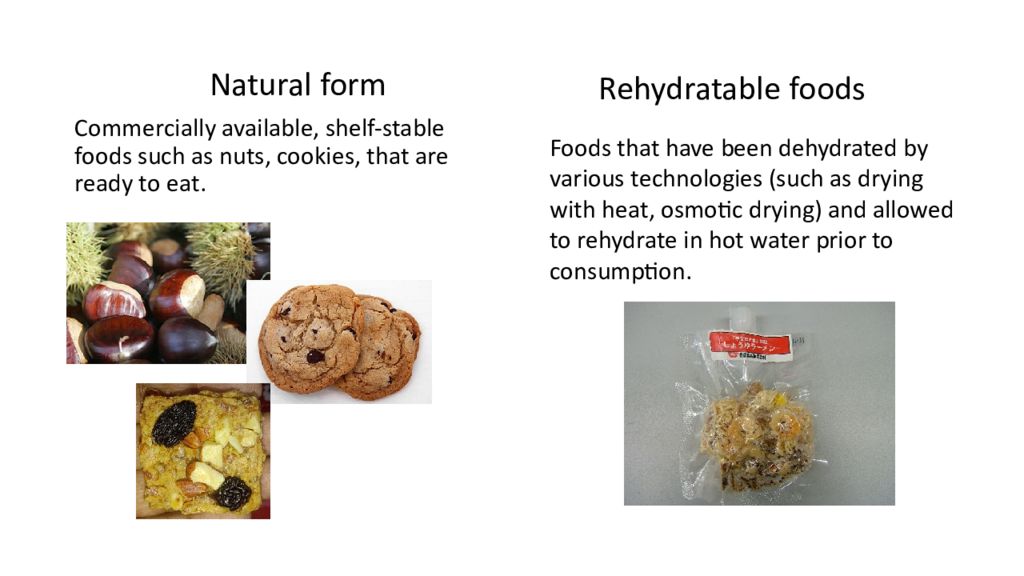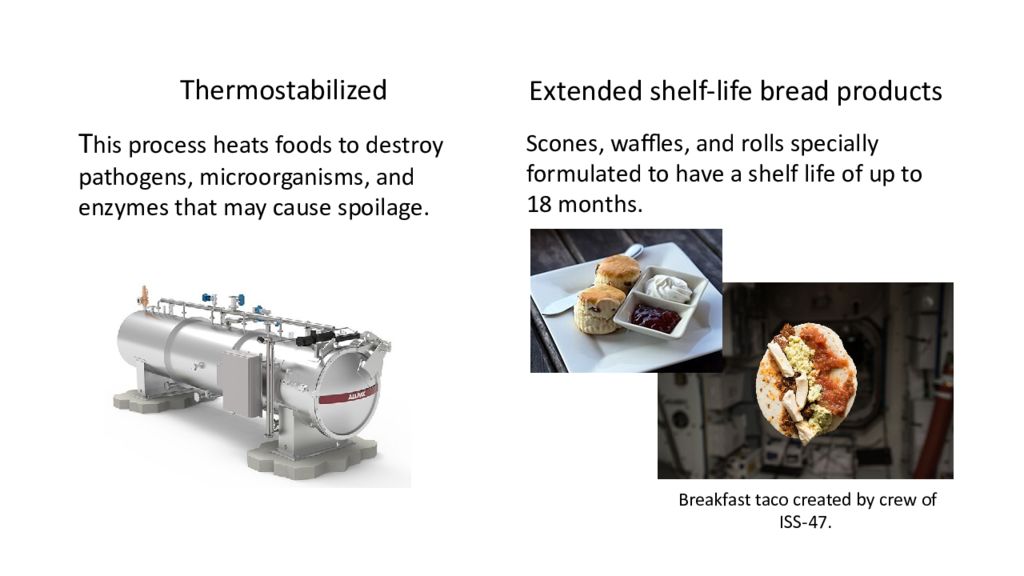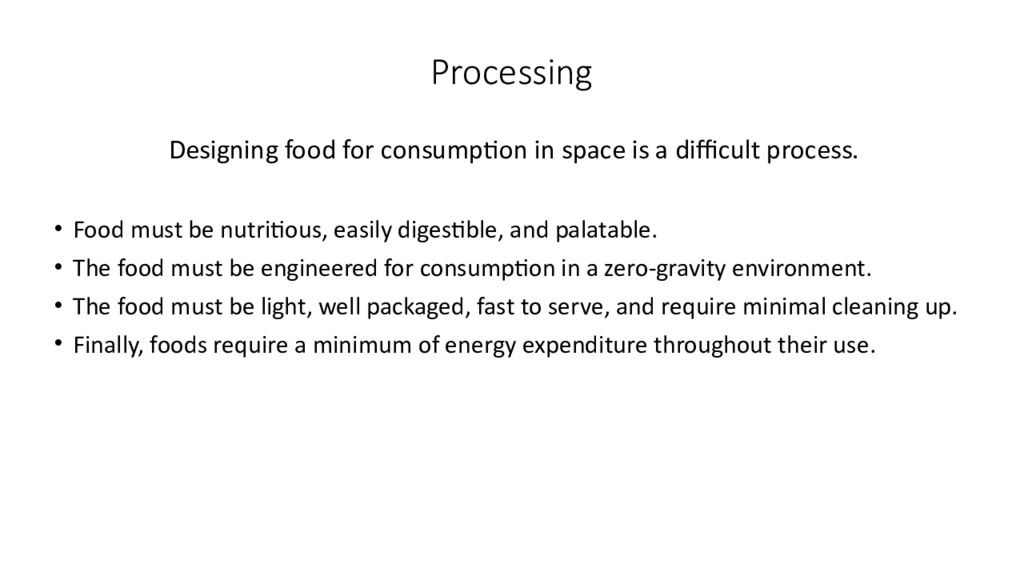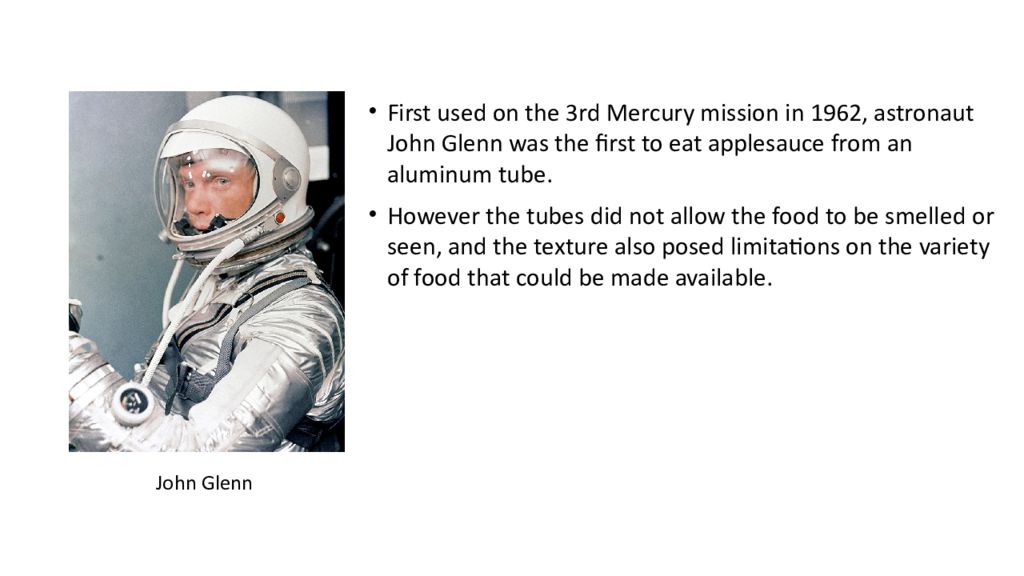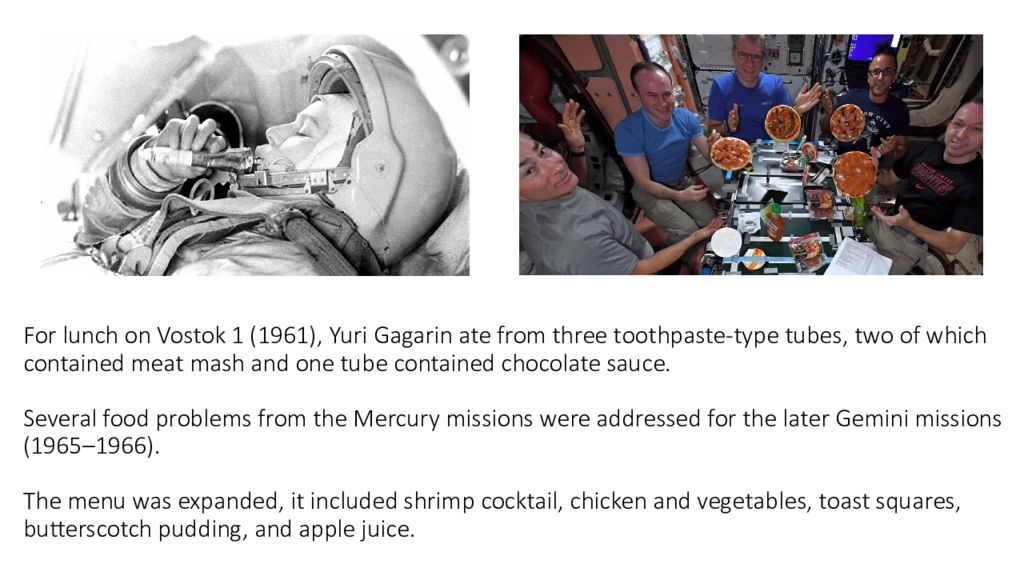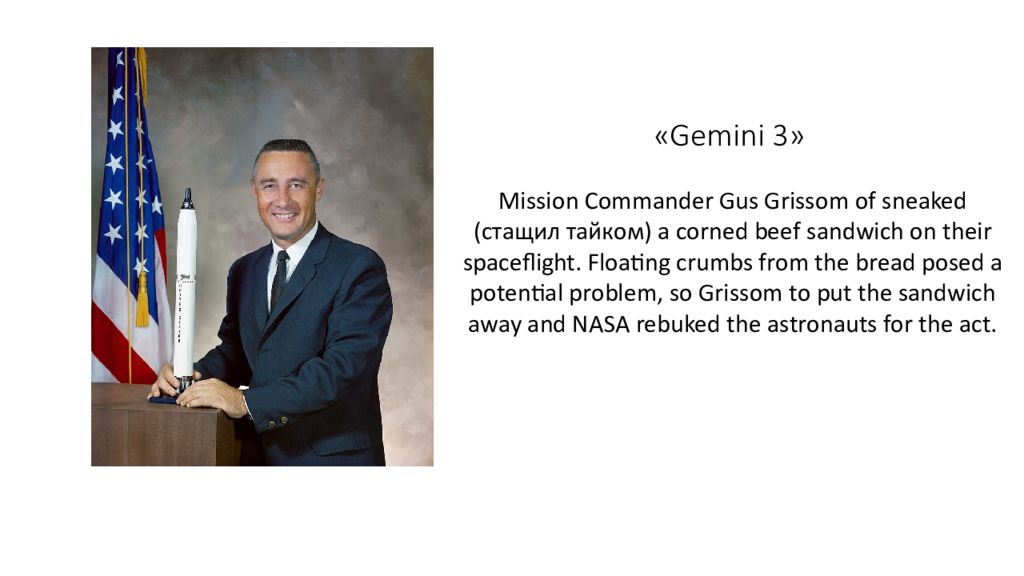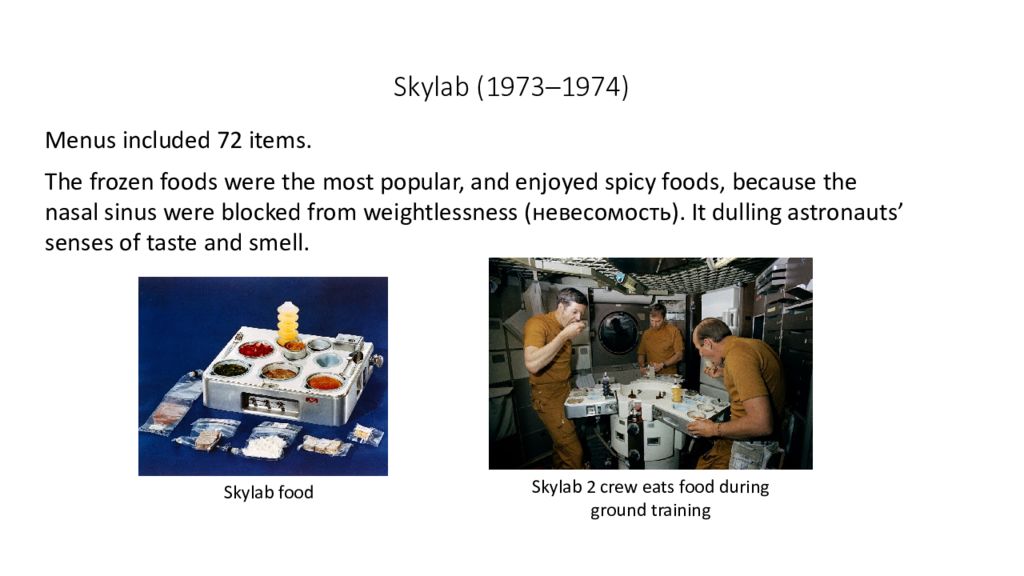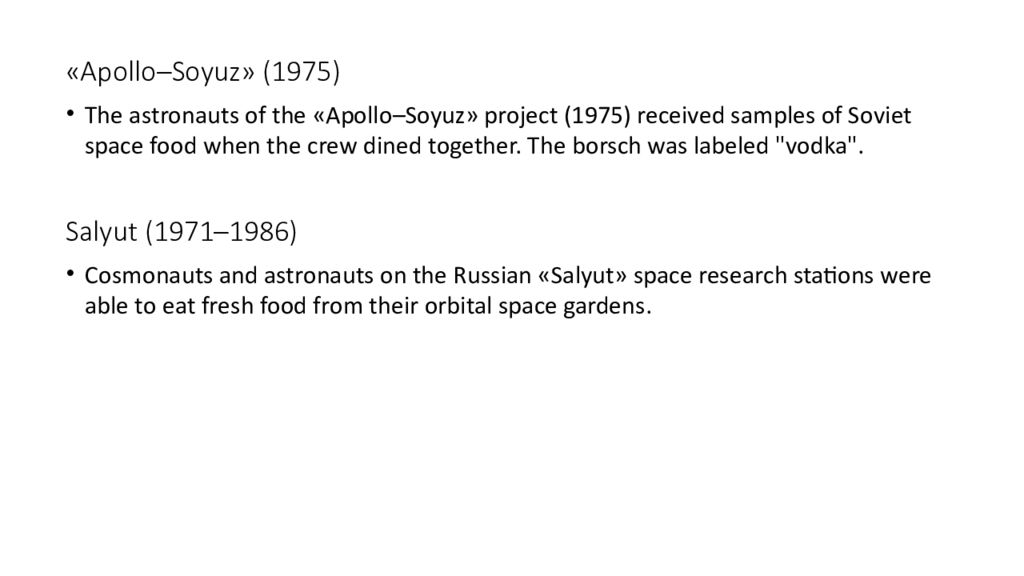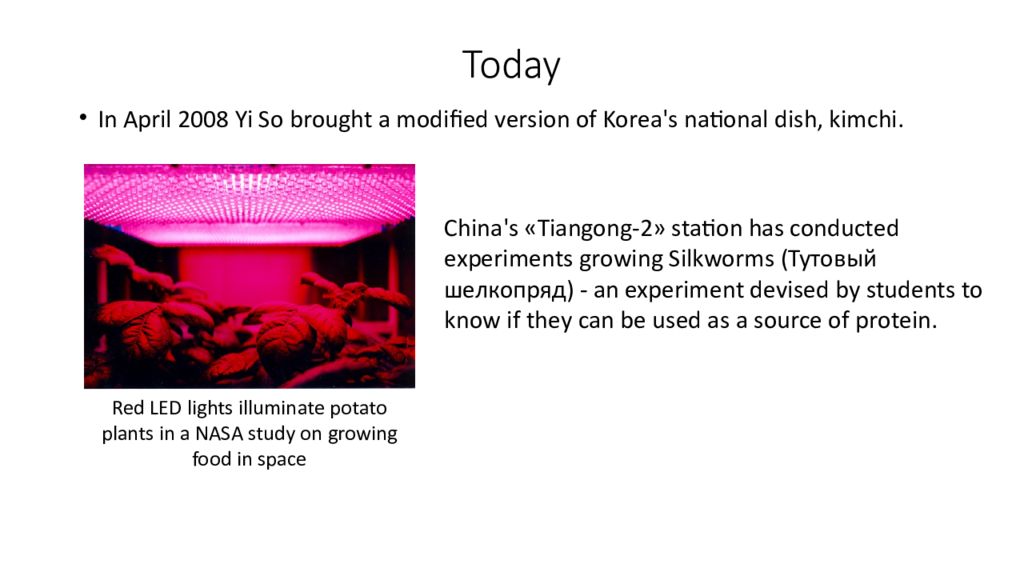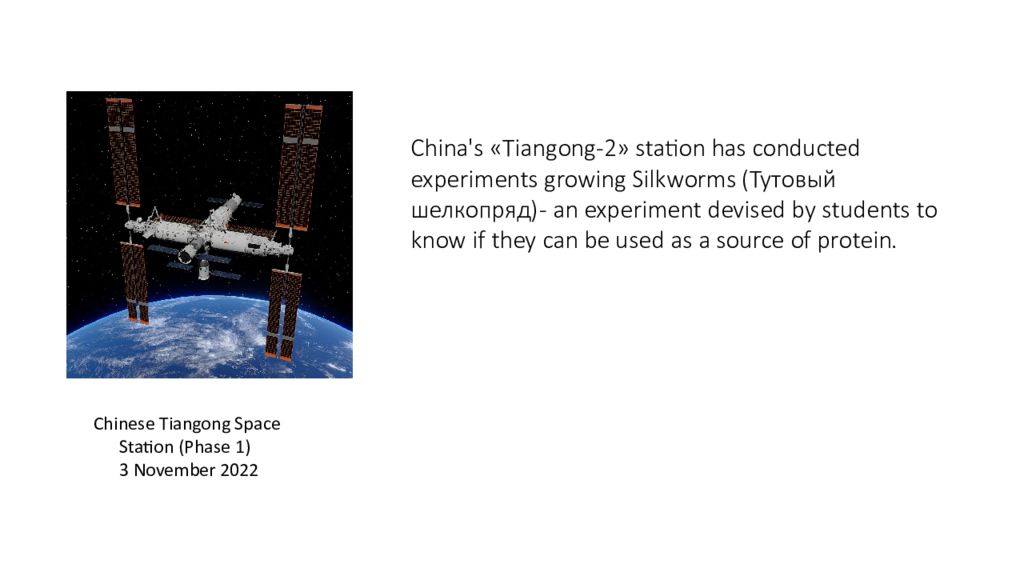Слайд 2: Packaging
T ubes C ans S ealed plastic packages Many foods from the Russian space program are packaged in cans and tins.
Слайд 3: C lassification of space food
Beverages Fresh Foods Irradiated meat Intermediate moisture Natural form Rehydratable f oods Thermostabilized Extended shelf-life bread products Food tray used aboard the Space Shuttles
Слайд 4: Beverages
Freeze dried drink mixes (coffee or tea) or flavored drinks (lemonade or orange drink) are provided in vacuum-sealed beverage pouches.
Слайд 5: Fresh Foods
These foods spoil quickly and need to be eaten within the first two days. These foods are provided as psychological support for astronauts who may not return home for extended periods of time. Apple and orange aboard ISS
Слайд 6
Irradiated meat Beef steak that is sterilized with ionizing radiation to keep the food from spoiling. Intermediate moisture Foods that have some moisture. Examples include sausage and beef jerky. A portable, trailer-mounted food irradiation machine
Слайд 7
Natural form Commercially available, shelf-stable foods such as nuts, cookies, that are ready to eat. Rehydratable foods Foods that have been dehydrated by various technologies (such as drying with heat, osmotic drying) and allowed to rehydrate in hot water prior to consumption.
Слайд 8
Thermostabilized T his process heats foods to destroy pathogens, microorganisms, and enzymes that may cause spoilage. Extended shelf-life bread products Scones, waffles, and rolls specially formulated to have a shelf life of up to 18 months. Breakfast taco created by crew of ISS-47.
Слайд 9: Processing
Designing food for consumption in space is a difficult process. Food must be nutritious, easily digestible, and palatable. T he food must be engineered for consumption in a zero-gravity environment. T he food must be light, well packaged, fast to serve, and require minimal cleaning up. Finally, foods require a minimum of energy expenditure throughout their use.
Слайд 10
First used on the 3rd Mercury mission in 1962, astronaut John Glenn was the first to eat applesauce from an aluminum tube. However the tubes did not allow the food to be smelled or seen, and the texture also posed limitations on the variety of food that could be made available. John Glenn
Слайд 11: For lunch on Vostok 1 (1961), Yuri Gagarin ate from three toothpaste-type tubes, two of which contained meat mash and one tube contained chocolate sauce. Several food problems from the Mercury missions were addressed for the later Gemini missions (1965–1966). The menu was expanded, it included shrimp cocktail, chicken and vegetables, toast squares, butterscotch pudding, and apple juice
Слайд 12: Gemini 3 » Mission Commander Gus Grissom of sneaked ( стащил тайком ) a corned beef sandwich on their spaceflight. Floating crumbs from the bread posed a potential problem, so Grissom to put the sandwich away and NASA rebuked the astronauts for the act
Слайд 13: Skylab (1973–1974)
Menus included 72 items. The frozen foods were the most popular, and enjoyed spicy foods, because the nasal sinus were blocked from weightlessness ( невесомость ). It dulling astronauts’ senses of taste and smell. Skylab 2 crew eats food during ground training Skylab food
Слайд 14
«Apollo–Soyuz» (1975 ) The astronauts of the «Apollo–Soyuz» project (1975) received samples of Soviet space food when the crew dined together. The borsch was labeled "vodka ". Salyut (1971–1986) Cosmonauts and astronauts on the Russian « Salyut » space research stations were able to eat fresh food from their orbital space gardens.
Слайд 15: Today
In April 2008 Yi So brought a modified version of Korea's national dish, kimchi. Red LED lights illuminate potato plants in a NASA study on growing food in space China's « Tiangong-2 » station has conducted experiments growing Silkworms ( Тутовый шелкопряд ) - an experiment devised by students to know if they can be used as a source of protein.
Последний слайд презентации: SPACE FOOD: China's « Tiangong-2 » station has conducted experiments growing Silkworms ( Тутовый шелкопряд ) - an experiment devised by students to know if they can be used as a source of protein
Chinese Tiangong Space Station (Phase 1) 3 November 2022

